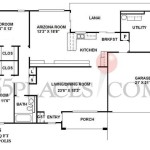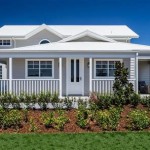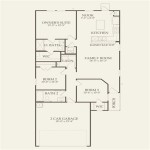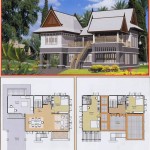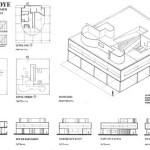Dual Living House Plans Perth: Maximizing Space and Investment
Perth's housing market is evolving, and increasingly, homeowners are exploring innovative ways to maximize their property's potential. Dual living house plans are gaining significant traction as a solution to various needs, from accommodating aging parents or adult children to generating rental income. This article delves into the intricacies of dual living house plans in Perth, providing a comprehensive overview of the considerations, benefits, and design options available.
Dual living arrangements, in essence, involve incorporating two separate living spaces within a single property. These spaces typically include independent kitchens, bathrooms, living areas, and bedrooms, thereby providing occupants with a degree of autonomy and privacy. While the concept is straightforward, the execution requires careful planning and adherence to local building codes and regulations.
The popularity of dual living house plans stems from several factors, primarily affordability, lifestyle flexibility, and investment opportunities. Perth, like many major cities, faces challenges related to housing affordability. Dual living can provide a more cost-effective solution than purchasing separate properties for different family members. Furthermore, it allows for greater lifestyle flexibility, offering options for multi-generational living, independent living for young adults, or the potential to rent out one of the dwellings.
Successfully implementing a dual living design requires a thorough understanding of zoning regulations, building codes, and the specific needs of the intended occupants. Engaging with experienced architects and builders familiar with Perth's local requirements is crucial to ensure a smooth and compliant construction process. The initial planning phase should involve detailed discussions regarding the property's limitations, the desired level of privacy and separation between the dwellings, and the overall aesthetic goals.
Understanding Zoning Regulations and Building Codes in Perth
Zoning regulations play a critical role in determining the feasibility of a dual living arrangement. Local councils in Perth have specific rules regarding the construction of secondary dwellings, often referred to as "granny flats" or "ancillary dwellings." These regulations dictate factors such as minimum lot sizes, setbacks from property boundaries, parking requirements, and the maximum size of the secondary dwelling relative to the main house. Understanding these regulations is the first step in determining whether a dual living design is permissible on a particular property.
Building codes, on the other hand, govern the structural integrity, safety, and accessibility of the building. Compliance with the National Construction Code (NCC) is mandatory for all new constructions and renovations in Australia, including dual living dwellings. The NCC specifies requirements for fire safety, energy efficiency, plumbing, electrical systems, and disability access, among other things. It is imperative to ensure that the dual living design adheres to all relevant building codes to avoid potential legal issues and ensure the safety of the occupants.
Navigating these regulations can be complex, and it is advisable to consult with a building surveyor or planning consultant who can interpret the specific requirements applicable to the property. They can provide guidance on obtaining the necessary approvals and permits from the local council.
Furthermore, it is essential to consider the potential impact on property values. While dual living can enhance a property's appeal to certain buyers, it may also affect its perceived value depending on the location and the overall design. Researching comparable properties in the area can provide insights into the potential value implications of adding a secondary dwelling.
Proper adherence to zoning regulations and building codes not only ensures legal compliance but also contributes to the overall safety, functionality, and long-term value of the property. Neglecting these aspects can result in costly rectifications and potential legal disputes.
Key Design Considerations for Dual Living Homes
Designing a dual living home requires careful consideration of several factors to ensure both privacy and functionality for all occupants. The layout should effectively separate the two living spaces, providing independent access points and minimizing noise transfer. Orientation, natural light, and ventilation are also crucial considerations to create comfortable and energy-efficient living environments.
A well-designed floor plan should prioritize independent access to each dwelling. Separate entrances, driveways, and outdoor areas can significantly enhance privacy and reduce the feeling of shared living. Strategic placement of windows and doors can also minimize visual intrusion and maintain a sense of independence.
Acoustic insulation is another critical design element. Walls, floors, and ceilings between the two dwellings should be properly insulated to minimize noise transfer. This can be achieved through the use of soundproofing materials and techniques, such as double-layer plasterboard, insulation batts, and acoustic seals around doors and windows.
The size and layout of each dwelling should be tailored to the specific needs of the occupants. Consider the number of bedrooms, bathrooms, and living areas required, as well as any specific accessibility requirements. The kitchen and bathroom layouts should be designed to maximize functionality and storage space.
Outdoor spaces should also be carefully planned to provide each dwelling with its own private area for relaxation and entertainment. This could include separate patios, balconies, or gardens. Landscaping can also be used to create a visual buffer between the two dwellings and enhance privacy.
Energy efficiency is an increasingly important design consideration. Incorporating energy-efficient features such as solar panels, double-glazed windows, and efficient appliances can significantly reduce energy consumption and lower utility bills for both dwellings. Proper insulation and ventilation can also contribute to a more comfortable and sustainable living environment.
Furthermore, the overall aesthetic of the dual living home should be consistent and cohesive. The design should integrate seamlessly with the existing house and the surrounding neighborhood. Choosing complementary materials and finishes can create a unified and visually appealing appearance.
Ultimately, the design of a dual living home should strike a balance between privacy, functionality, and aesthetics, creating two independent living spaces that complement each other and enhance the overall value of the property.
Financial Aspects and Investment Potential
One of the primary motivations for considering dual living house plans is the potential for financial benefits. These benefits can manifest in various ways, including reduced housing costs, rental income generation, and increased property value. However, it is essential to carefully assess the financial implications before embarking on a dual living project.
For multi-generational families, dual living can significantly reduce housing costs by allowing multiple family members to share the same property. This can alleviate the financial burden of purchasing separate properties for aging parents or adult children. The combined income of the occupants can also make it easier to manage mortgage repayments and other household expenses.
Rental income is another significant financial benefit of dual living. Renting out one of the dwellings can provide a steady stream of income that can be used to offset mortgage repayments or other expenses. The rental potential of a dual living property will depend on factors such as its location, size, and amenities. Conducting market research to determine the average rental rates in the area is crucial before making a decision.
The construction costs of a dual living home can vary depending on the size, design, and materials used. It is essential to obtain detailed quotes from multiple builders to compare prices and ensure that the project stays within budget. Consider the long-term costs of maintaining two separate dwellings, including utility bills, insurance, and property taxes.
The value of a dual living property can be influenced by several factors, including its location, size, design, and the overall demand for dual living homes in the area. A well-designed and well-maintained dual living property can potentially command a higher price than a standard single-family home. However, it is essential to consult with a real estate agent to assess the potential impact on property value.
Financing a dual living home can be more complex than financing a standard home. Some lenders may require a larger deposit or charge higher interest rates for dual living properties. It is essential to shop around for the best financing options and consult with a mortgage broker who specializes in dual living loans.
Tax implications are another important consideration. Depending on how the dual living property is used, there may be tax implications related to rental income, capital gains, and depreciation. It is advisable to consult with a tax advisor to understand the potential tax implications before making a decision.
Overall, the financial aspects of dual living should be carefully evaluated to ensure that the project is financially viable and aligned with the long-term financial goals of the homeowner. A thorough financial analysis can help determine whether dual living is the right investment decision.

Dual Living Designs

202 Dual Living Luxury Home Perth Design Floor Plans House Modern

Dual Living Sovereign Building Company

Dual Living Sovereign Building Company

Dual Living Sovereign Building Company

Dual Occupancy Home Designs G J Gardner Homes

Dual Living 1 House Design Hakuna Homes

Rural Dual Living Home Designs Mandurah Bunbury Perth Busselton Southwest The Dwellingup

Dual Key Designs More Choice Of New Homes

Dual Occupancy House Plans Google Search N Farmhouse New


